One of my all-time favorite herbs, stinging nettle has been grown and foraged for food, and used in textiles and medicine, for thousands of years across many parts of the world.
You may be aware that you can harvest and eat the leaves, but did you know the root is also usable?
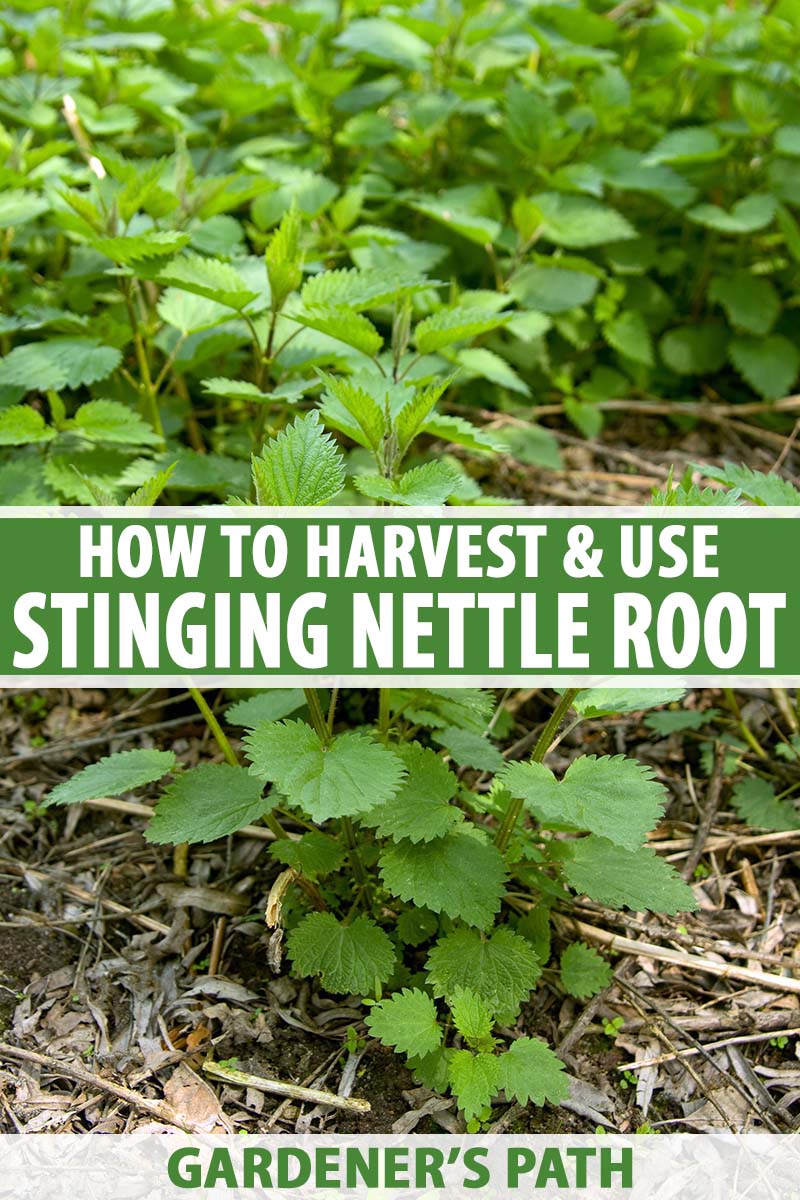
We link to vendors to help you find relevant products. If you buy from one of our links, we may earn a commission.
It has specific medicinal properties that are unique from those of the other parts of the plant.
What You’ll Learn
What Is Nettle Root?
Most gardeners are familiar with stinging nettle (Urtica dioica), an herbaceous perennial known for the infamous stinging hairs that can be found all along its stems and the undersides of its leaves.

Nettle grows and spreads by stolons, which form a network of yellow, lateral, creeping rhizomes.
This structure is vigorous, and it spreads like crazy!
The rhizomes are double-layered, consisting of an upper layer of young runners and a deeper layer of thicker, more fibrous roots.
These robust roots are easy to harvest and store, and they offer a number of medicinal uses.
Uses for Nettle Root
Stinging nettle root extract is often used in over-the-counter supplements and herbal remedies, particularly those labeled for “men’s health.”
The root extract contains beta-sitosterol, a plant phenol that has been shown to reduce urinary tract complications associated with benign prostatic hyperplasia (BPH) – the enlargement of the prostate.
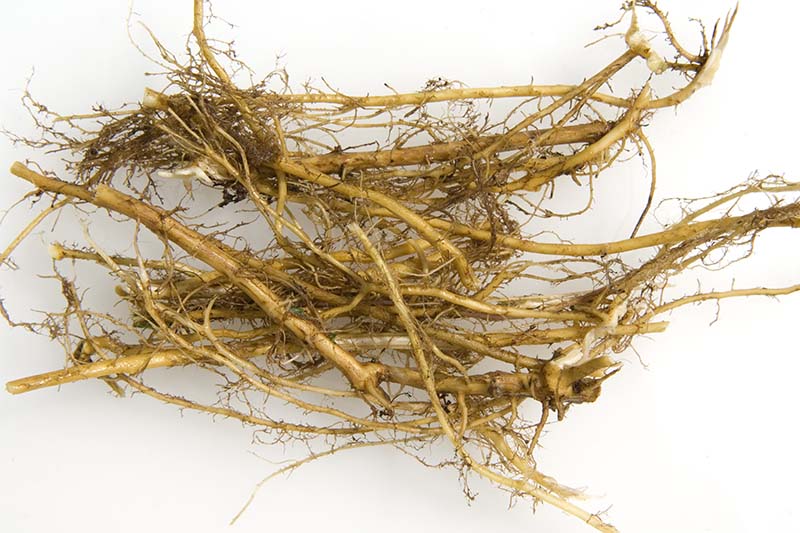
A double-blind study conducted by M. R. Safarinejad, from the Department of Urology, Urology Nephrology Research Center at Shaheed Beheshti University of Medical Sciences in Tehran, concluded that extract of U. dioica had beneficial effects in the treatment of urinary symptoms of BPH. A modest reduction in prostate size was also noted.
According to experts at the Milton S. Hershey Medical Center at Penn State, Hershey, some studies have indicated that the effectiveness of nettle root extract may be comparable to finasteride, a medication often prescribed for BPH.
Finasteride is a 5-alpha-reductase inhibitor, which slows the conversion of testosterone to DHT (dihydrotestosterone), a metabolite that can cause inflammation of the prostate and contribute to hair loss.
According to a study by R. W. Hartman, published in the journal for Phytomedicine, U. dioica extract inhibited 5-alpha reductase activity in high concentrations. It was shown to be more effective when combined with an extract of Pygeum africanum, the African cherry tree.
The American Botanical Council concludes that “the approved modern therapeutic applications for stinging nettle herb, leaf, and root are supportable based on their history of clinical use in well-established systems of traditional medicine, on well documented phytochemical investigations, on pharmacological studies in animals, and on human clinical studies.”
To learn more about growing, using, and harvesting stinging nettle leaves, check out this comprehensive guide.
A Note of Caution:
Always seek medical advice from your doctor or other healthcare professional before taking any nutritional or herbal supplements. This information is not intended to diagnose, treat, or cure any condition and is for informational purposes only.
When to Harvest
Plan to harvest in late fall or early spring. This is the time when energy from the plant is directed toward root production rather than to the leaves, seeds, or flowers.
In warmer climates where the ground doesn’t freeze, you may be able to harvest in the winter as well.
If you are harvesting in the spring, it is best to dig up roots before new shoots begin to sprout out of the rhizomes and make their way up to the surface of the soil. Once this happens, the plants’ energy will be directed toward above-ground growth instead of root development.
How to Harvest
Nettle rhizomes are typically located about six inches deep underground, in two layers.
The upper layer is comprised of younger runners, which may be watery and narrow, and light yellow or whitish in color.
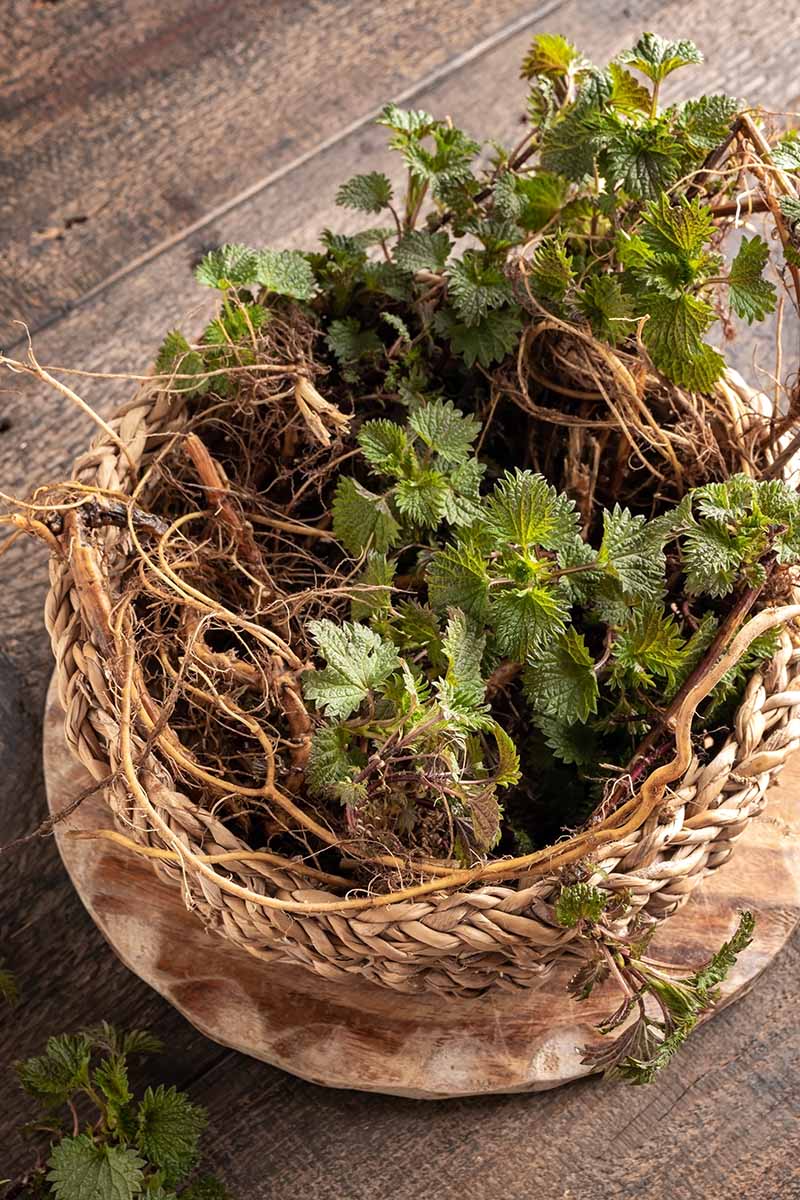
They will have hair along the nodes, and this is where next year’s shoots will sprout. Before winter sets in, the runners will produce tiny green shoots that will overwinter underground, gearing up to sprout in the spring.
Those in the deeper layer are thicker in diameter. They are a darker yellow and will be more dry.
In heavier soils, they may be shallower, while sandier soils may lead to deeper growth. The thickness may vary from something thinner than a pencil to those that are about the size of a quarter around.
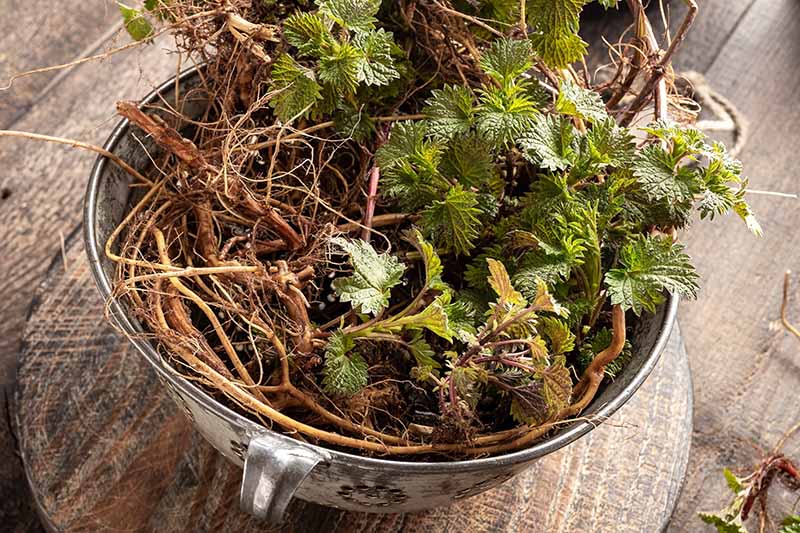
When you are ready to harvest, put on your long sleeves and gloves, grab a basket or bag, and gather your digging tool of choice.
First, cut off the tops of the plants as you harvest them, to avoid getting stung and to keep any plant debris out of your harvested crop.
You can throw these off to the side for now, but move them back to the disturbed area when you are done to allow them to decompose back into the soil. This will help improve the nutrient content and enhance future soil growth.
Tip: You can also separate and save the fibrous stems to make rope!
Next, carefully dig a wide circle around the base of your plants, leaving a few feet of wiggle room around the edges to avoid causing damage. As you dig down towards the lower level, you can gently pull up the network of runners that are revealed.
Gently tug up the runners, and use a hand tool to help you retrieve the deeper layer.
Bag up your harvest, making sure the area you disturbed is restored and covered back up with vegetation, leaf litter, organic matter, or mulch to protect the soil and help it to revive more quickly.
Remember, always leave some behind to re-sprout and re-colonize if you want to keep your crop going.
As a general rule, try to only dig up a third of roots at one time.
It will take about three years for a harvested area to reach maturity again, but if you only take a third at a time, you should still have some that’s ready to enjoy every year!
Processing and Preserving
Start by giving the rhizomes a good shake to knock off as much dirt as you can. Using pruning shears or scissors, clip off any leaves or stems that remain attached, and cut any longer pieces down to a manageable size.
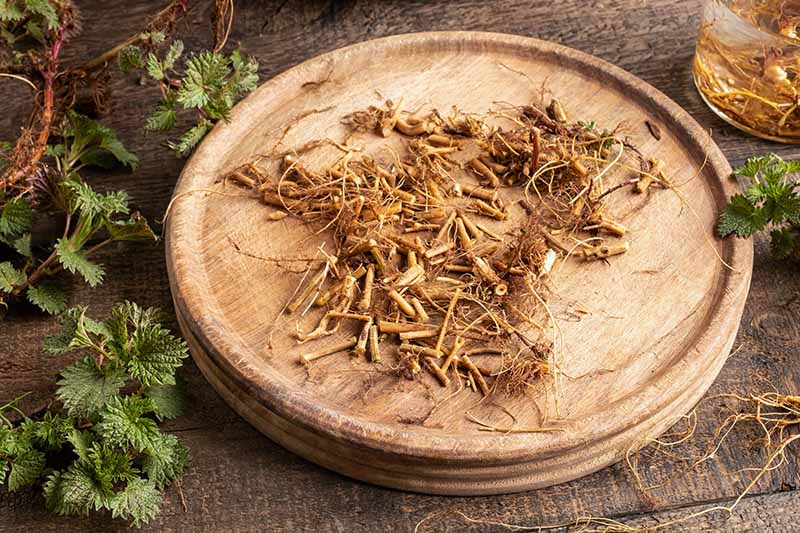
Next, it’s time to wash them. I like to use a three-bin system.
Set up three large tubs of water, and place the roots in the first tub. Gently rub and swoosh them around to clean them, then move them over to the next bin.
Clean them again, then move them once more. By the time you finish the third scrub, they should be totally clean and free of dirt.
Lay the freshly washed roots out in the shade or in a dry room on a cloth to drain and dry on the surface, turning them every so often to aid the process.
Now they should be ready to use fresh, or prepped to dry.
Drying
Cut them into very small pieces with pruners or scissors. The thicker the pieces are, the smaller you should cut them.
Pieces that are roughly equal in size will dry at the same rate, and this makes them easier to process.
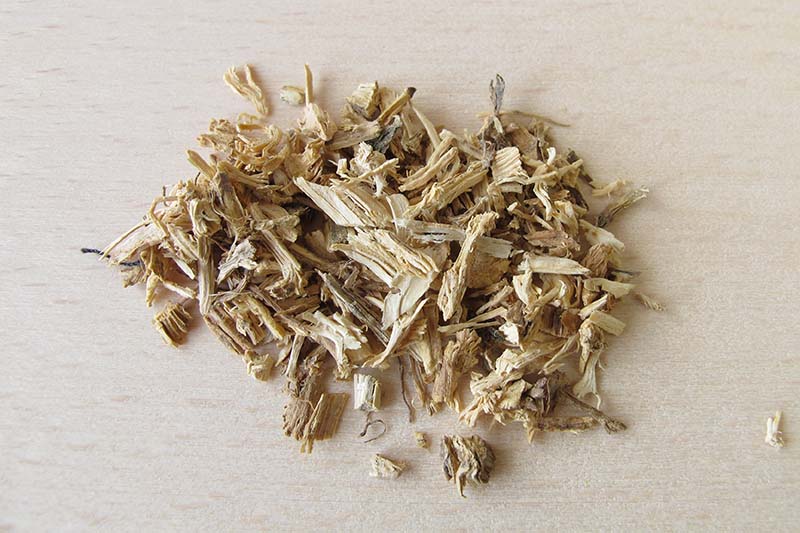
They should dry in about 24 hours in a dehydrator set to 100°F.
To air dry, lay the prepped pieces out on a mesh screen or rack in a dark and dry location. They should dry in approximately five to seven days.
Four pounds of fresh roots will yield about one pound dried.
Get more info on drying herbs in our complete guide.
Tincturing
To make a medicinal tincture, place finely chopped fresh or dried roots in a glass jar and cover with a strong alcohol, such as 100-proof vodka. Seal tightly with a lid and place in a dark location, such as a pantry.
Shake daily for about a month to agitate, and then strain.
The root can also be powdered, brewed as a tea, or even applied topically as a cream or rinse.
It is available for purchase in pill form in many health food stores.
The Root of the Matter
Stinging nettles are one of those exceptional herbs for which all parts of the plant can be used.
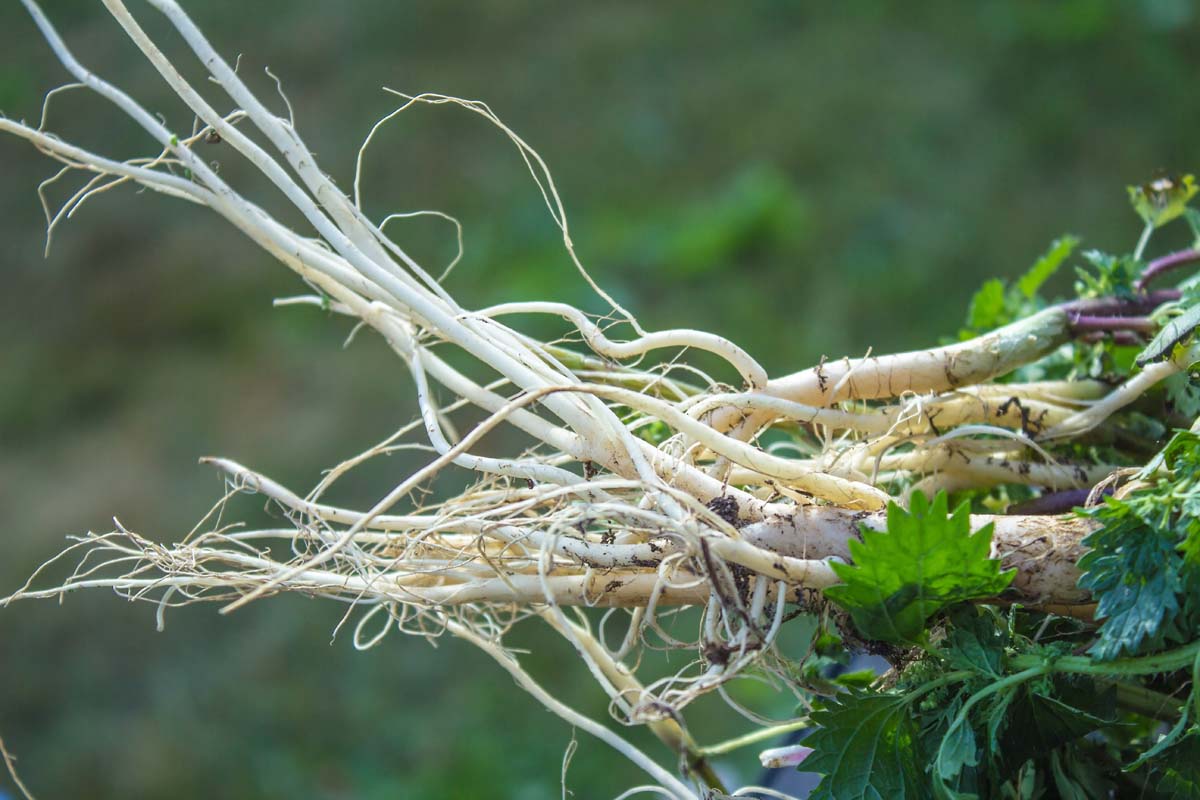
This year, after you harvest the young leaves in the spring and the seeds in the late summer, why not try digging up some roots in the fall? Who knows, they might just come in handy one day!
In what ways have you harvested and used nettle root? Tell us about your experience in the comments below!
For more information about growing medicinal plants in your garden, try the following guides next:
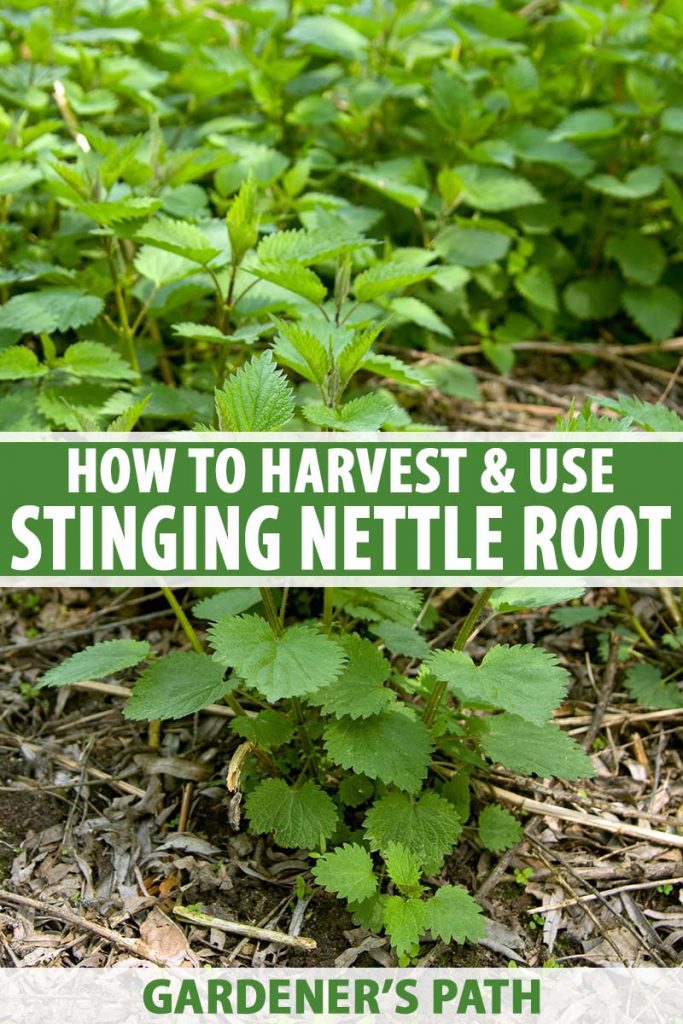
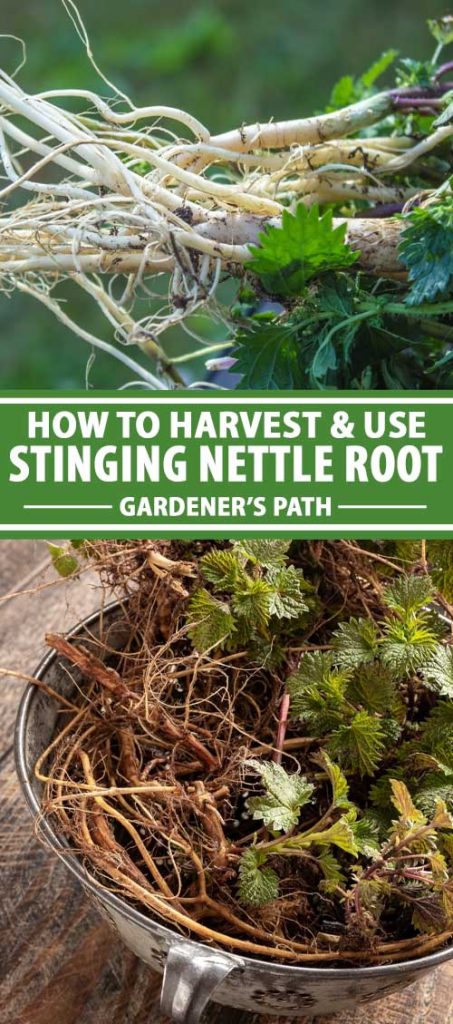
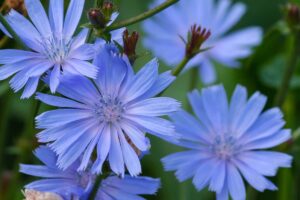
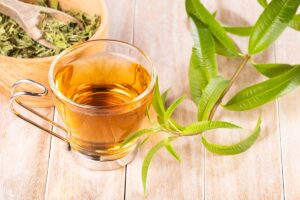
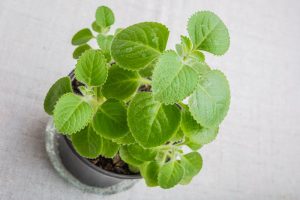
Northern Minnesotan, here! It’s the perfect time to dig and fry nettles here. I make all my own teas, and I particularly love nettle root to help manage the inflammation from my RA. Tastes a bit like matcha, too! Extra bonus this year, I found a mullein plant smack in the middle of my nettle patch. Bonus!
Herbalist in training. Done a lot of research and found this site to be put together very well. Informative without a lot of unnecessary digression. Thank you
Thank you for your kind words Sharon!